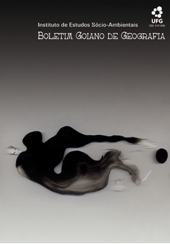PARTNER-SPATIAL INEQUALITIES, DEMOCRACY AND MANAGEMENT METROPOLITAN: ANALYSIS OF THE INSTITUTIONAL PERFORMANCE IN GOIANIA (1997-2007)
DOI:
https://doi.org/10.5216/bgg.v28i2.5743Abstract
The urban development of Goiânia and its consequent formation metropolitan resulted in the constitution of a series of new partner-territorial problems. Of these, the irradiation of the inaqualities calls the attention, explicit in this new "order" (or chaos) for the decentralization of the real estate investments of luxury - such as the condominiums for the upper-middle class - and for the ones of market in general. With this, the hiddings place of the city had started to reproduce the isotopy-heterotopy relation, that is, the forms and conditions of the urban reference and its difference. However, in the difference it is distinguished partner-spatial segregation, becoming in the main challenge to be surpassed by the metropolitan effort. For in such a way, the Constitution of the Republic of 1988 armed the institucionalidade with a series of devices that cause the administrative decentralization and the democratization of the decisions of the public policy. One of the main ones felt for this is to absorb the potentiality of the sociological ones (Lefebvre, 1999) in the resolution of the problems and, consequently, the social conflicts. Ahead of this, this work intends to answer as that the municipal managements of Goiânia, enter the years of 1997 and 2006, if they had used of the poliarchy (Dahl, 1997), that is, of the magnifying of the democratic condition to decide the happened problems of the partner-spatials inaqualities in the city.
Downloads
Downloads
Published
How to Cite
Issue
Section
License
Authors will not receive any payment for publishing their work in Boletim Goiano de Geografia. Therefore, they must grant all rights to the journal. However, they are entirely and exclusively responsible for the published contents, and editors are free to make corrections or adjustments to texts in conformity with publication guidelines.







